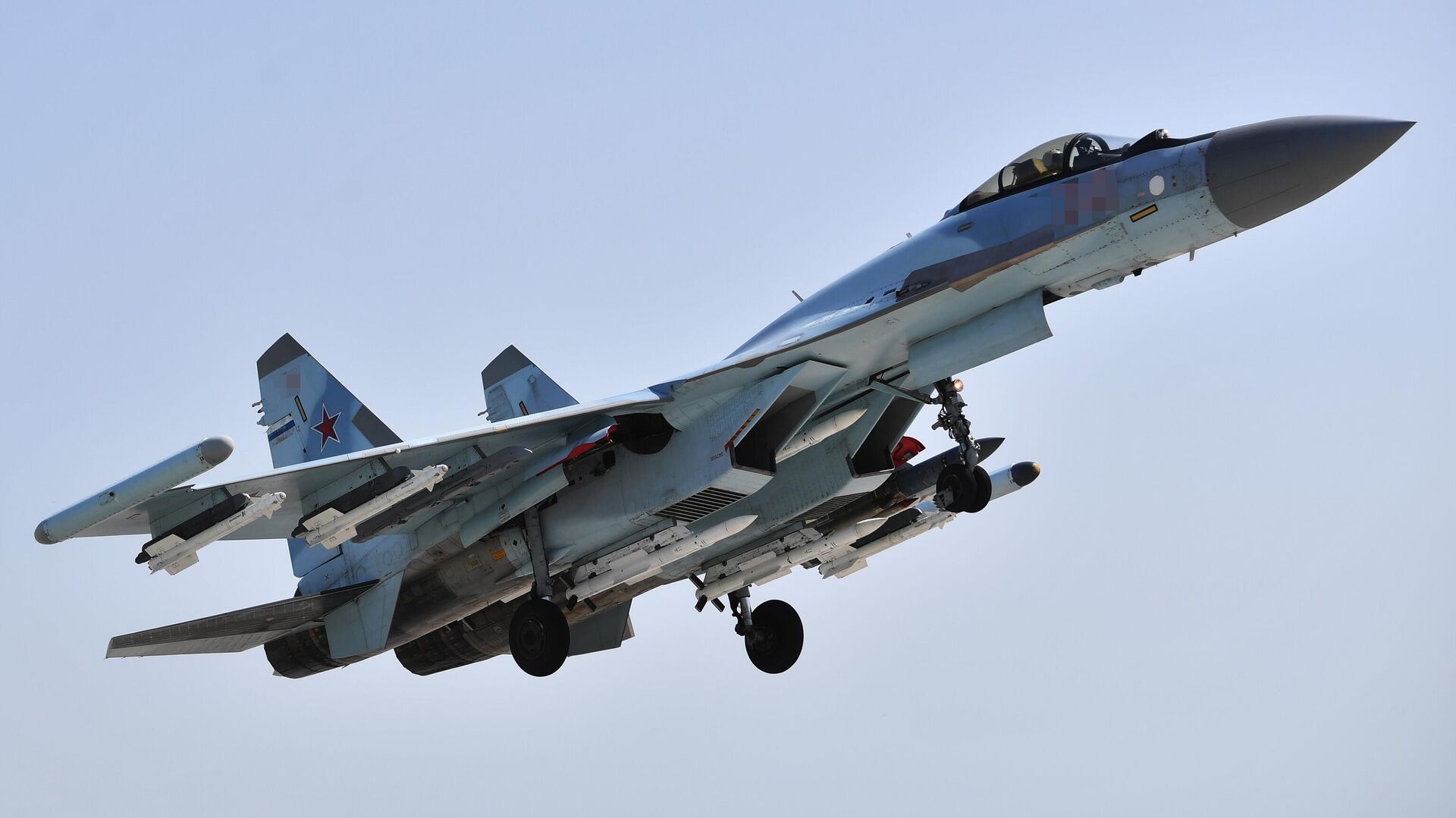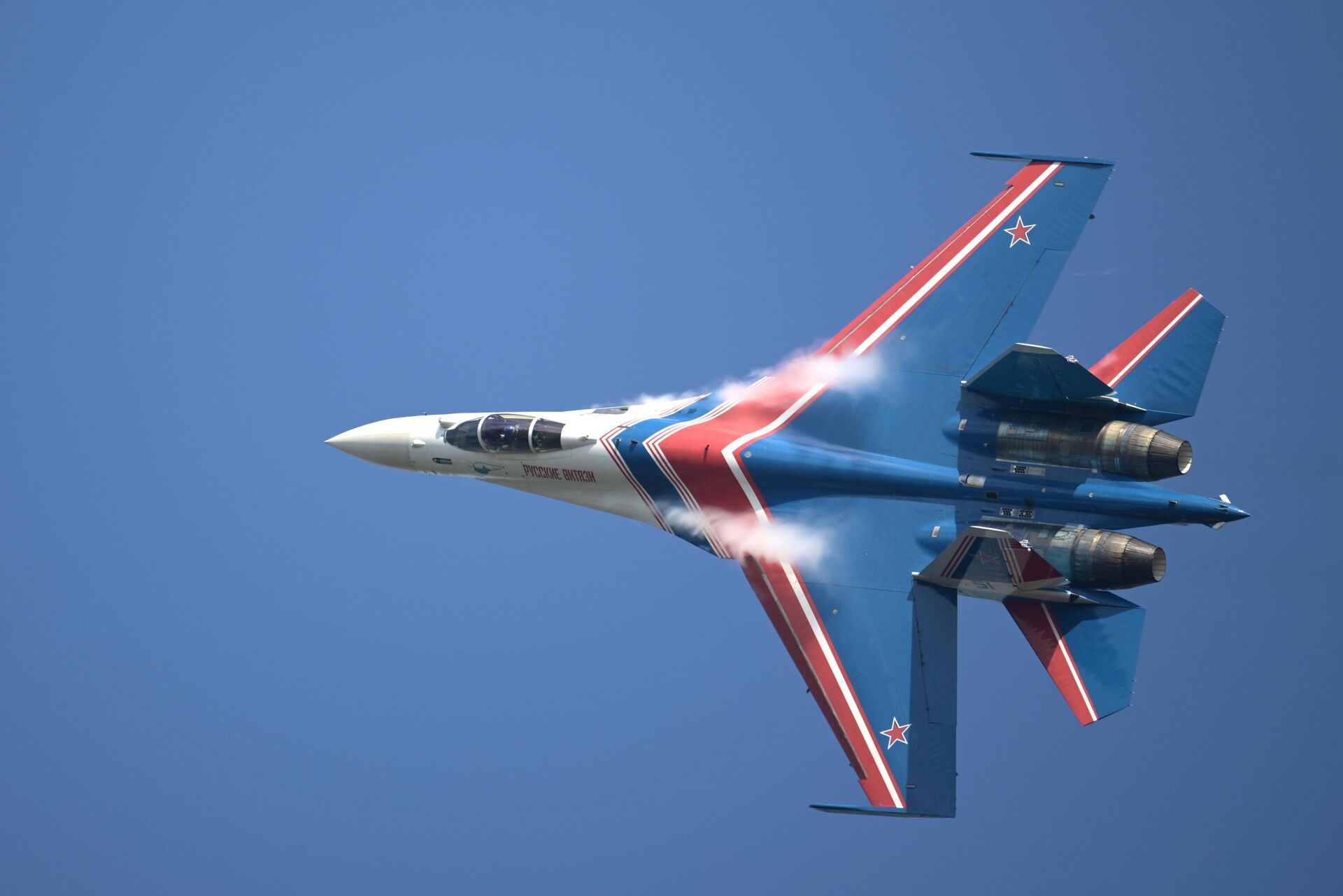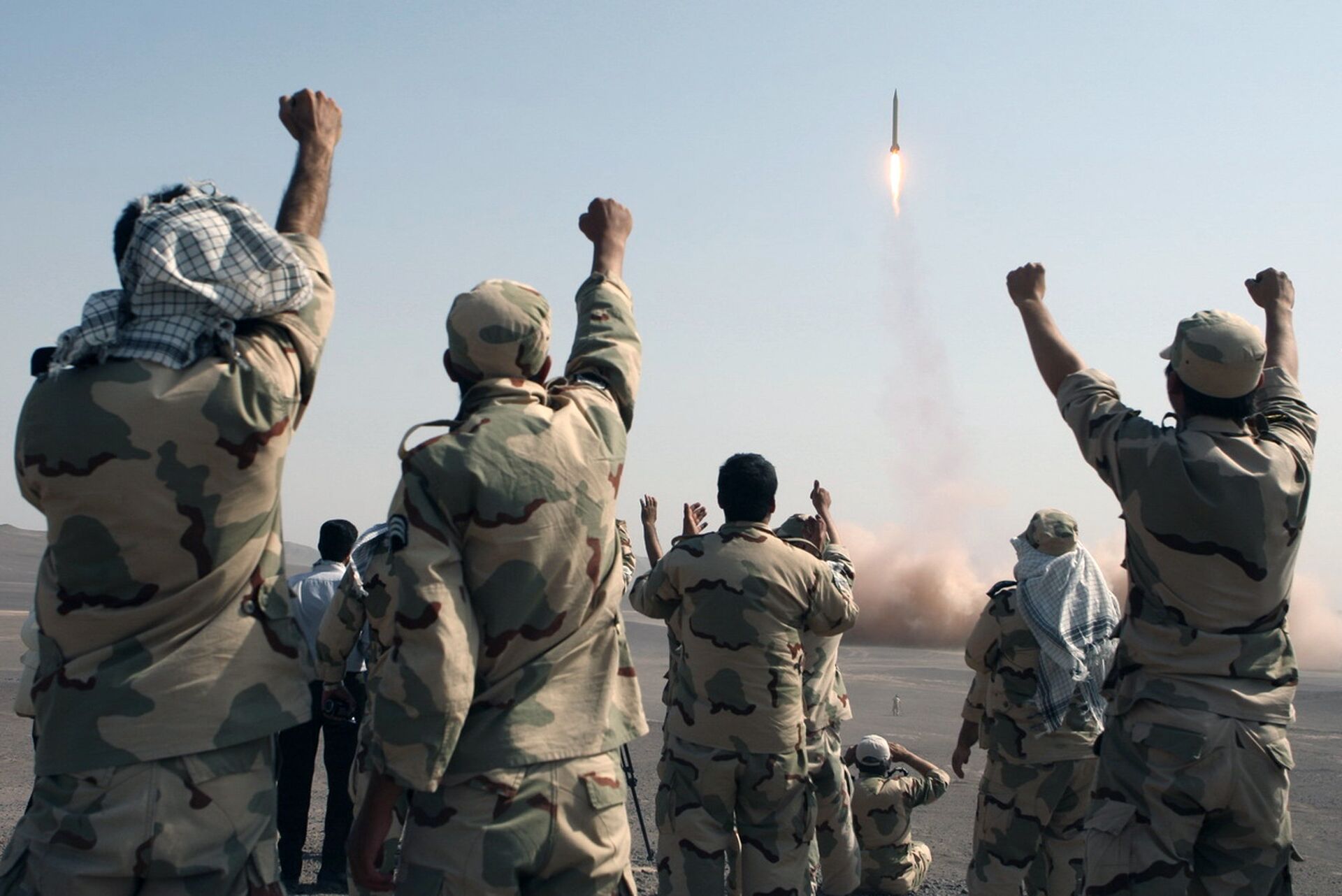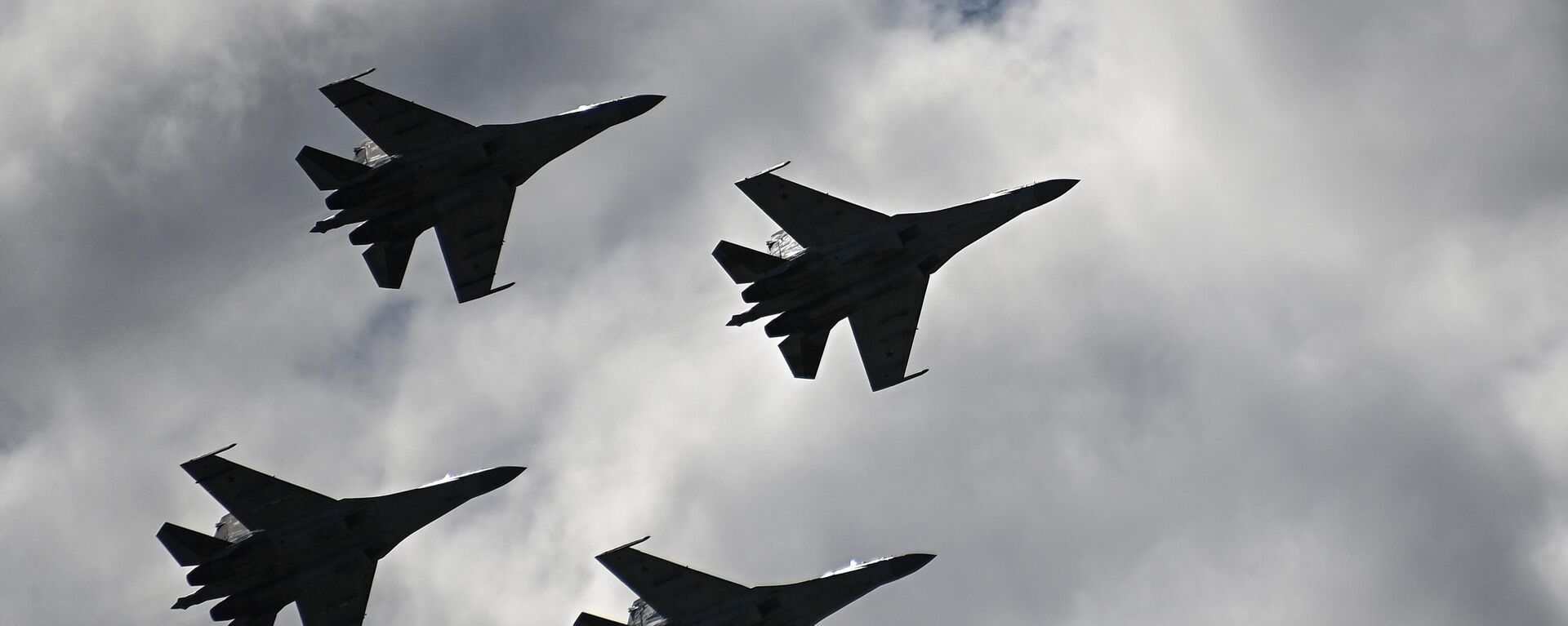Shock and Awe: Why Russia's Sukhoi Su-35 Fighters are Nightmare for Iran's Adversaries
04:00 GMT 20.01.2023 (Updated: 16:34 GMT 24.01.2023)

© Sputnik / РИА Новости
/ Subscribe
Tehran is due to receive the Russia-made Sukhoi Su-35 multirole super-maneuverable fighters in the coming Iranian year, which begins March 21, according to Shahriar Heydari, deputy head of the Iranian parliament's National Security and Foreign Policy Committee.
"The combat characteristics of the Super Flanker Su-35 provide it with capabilities to deal with air, ground and sea targets," Iranian military expert Mohammad-Hassan Sangtarash told Sputnik.
"This aircraft will be especially effective if Iran can install original weapons on it. The Super Flanker Su-35 can play the role of a combat mini-AWACS, and if connected to Iran's radar network, it will acquire unique point defense capabilities. If Iran purchases technologies and kicks off joint massive production [of the Su-35], it can gain a certain advantage over the fighters and warships of countries neighboring Iran."

Sputnik News was not able to independently confirm Heydari's statement. Queries to the Russian and Iranian Ministries of Defense about the reported Su-35 deal recieved no response as of publication time. However, Iran has made no secret of its interest in acquiring the fighter jet. In September, Iranian Air Force chief Hamid Vahedi told reporters that Tehran was exploring the possibility of purchasing the Su-35 from Russia.
The Sukhoi Su-35 (NATO: Super Flanker or Flanker E) is a single-seat, twin-engine, super-maneuverable aircraft, designed for intercepting and destroying all classes of aerial targets in ranged and close air engagements. It has exceptional dogfighting capabilities and can also hit ground and sea-surface targets, including troops and ground infrastructure covered by anti-aircraft weapons and located at a considerable distance from its base airfield.
The Su-35 is a version of the Su-27 fighter that has been deeply modernized and incorporates the most successful engineering concepts that previously tested well on the Su-27/Su-30 family of airplanes, according to Russia's United Aircraft Corporation (UAC) website.
Sangtarash explained that the Super Flanker fighters are classified as 4++ fighters and can complement Iranian third and fourth generation fighters.
"The Super Flanker has a Saturn 117 engine with a 4000 hour lifespan," the military expert continued. "This engine has a shorter life and higher maintenance cost than western fighter engines such as the [Eurofighter] Typhoon and the [Dassault] Rafale. However, the Russian engine power is greater than that of its competitors, and among western aircraft, only the F-35 Lightning, a fifth-generation fighter, has the ability to compete with the Super Flanker to some extent."
Even though the cost of maintaining and operating this jet appears to be high for Iran, these costs could be reduced if there are agreements on the joint production of the Su-35 engine in the Islamic Republic, the expert added.

A member of the "Russian Knights" (Russikiye Vityazi), Russian Air Force aerobatic display team flying Sukhoi SU-35S and Su-30SM fighters, at the opening ceremony of the International Military-Technical Forum ARMY-2022 in Kubinka.
© Sputnik / Vladimir Astapkovich
/ According to Sangtarash, the Su-35's thrust-vectoring system and integrated flight- and propulsion-control systems allow the jet to carry out impressive maneuvers which makes it highly-effective both in close combat and dogfights.
"Apart from the F-35 Lightning, none of the western fighters have this ability," the Iranian military expert remarked.
At the same time, the Super Flanker's radars make it capable of detecting targets with the radar cross section (RCS) of a target of 3 meters at a distance of 400 kilometers (248.5 miles), which is truly unique, he noted. When engaged in electronic warfare, the Su-35 is able to detect an F-16 fighter at a distance of 300 km (186.4 miles) and a Tomahawk missile at a distance of 70 km (43.5 miles), due to its Irbis Radar.
Forgotten Soviet-Era Fighter Jet Project
Sangtarash noted that Russia and Iran could have started joint production of jet fighters much earlier. He recalled that after the eight-year war between Iran and Iraq (1980-1988), General Mansour Sattari, then the commander of the Iranian Air Force, concluded a series of unique agreements with the Soviet Union.
"At that time, Iran purchased the MiG-29 and Sukhoi-24 fighters, and became very interested in Russia's [sic] 'Integral' project to create training and combat aircraft," the military expert recalled. "This project was named 'Shafak' (Dawn) in Iran. But, unfortunately, because of pressure from the Americans, our Russian friends withdrew from the project. If the interaction between Tehran and Moscow continued, today Iran would outstrip China in the production of fighter jets."
However, now a new chapter in relations between Russia and Iran has begun, they are friends in these difficult times, Sangtarash underscored.

In this photo released by the Islamic Republic News Agency (IRNA), members of the Iranian Revolutionary Guard celebrate after launching a missile during their maneuver in an undisclosed location in Iran (File)
© AP Photo / Mostafa Qotbi/IRNA
Iran Ready to Protect Itself
The United States and Israel announced that if Iran gets access to modern Russian fighter jets, they could resort to a military scenario against the Islamic Republic. In December, White House National Security Council spokesman John Kirby lashed out at Moscow over what it called "an unprecedented level of military and technical support" provided by Russia to Iran. Previously, Washington and Tel-Aviv policy-makers have discussed potential strikes on Iran's nuclear facilities.
"The attack on Iran's nuclear facilities should be analyzed in two dimensions: firstly, in terms of the power of weapons, and secondly, in terms of political will," Sangtarash pointed out.
According to the Iranian military expert, Tehran's adversaries will first try to undermine the Islamic Republic's government, foment a regime change and balkanize the country. Remarkably, the West is harboring the same plans with regard to Russia and China, he noted.
"Iran is ready to fight back in both conventional modern and hybrid warfare," Sangtarash asserted to Sputnik. "Instrumentalizing of Super Flanker Su-35s linked to Iran's smart defense network could make it extremely difficult for Tel Aviv and Washington to attack directly."
Defense Wall Against Western Interventions
Meanwhile, the Iranians are welcoming Tehran's intent to strengthen ties with Moscow in terms of military technical cooperation and weapons deals, according to Sangtarash.
"A new generation of purposeful personnel and brave pilots has been brought up," the military expert said. "The acquisition of Super Flanker Su-35s could reinvigorate the Iranian Air Force and will be very popular with the public."
At the same time, deeper cooperation with Russia and gaining new technologies will boost Iran's defense industry resulting in a substantive economic effect, according to him. The development of cooperation between the two countries in production of drones, cars, fighter jets, helicopters, etc. "will help raise public spirits and strengthen friendship between the two countries," he stressed.
Above all this, the delivery of Russian fighter jets to Iran means building up a defense wall protecting Southwest Asia from the West's illicit interference, Sangtarash concluded.






